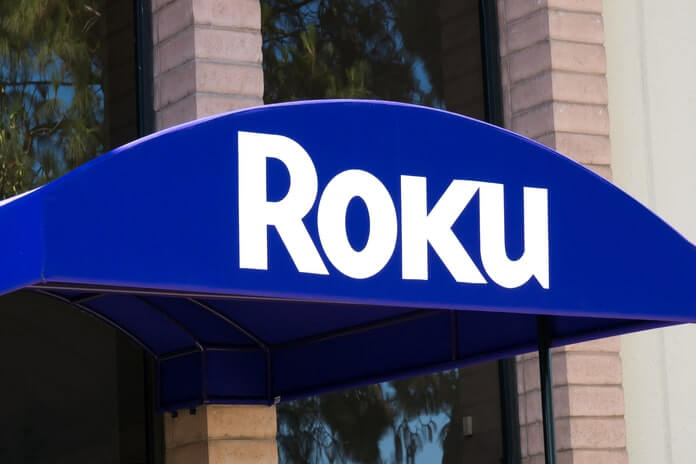Roku (NASDAQ:ROKU) shares have lost over two-thirds of their value in 2022, and the company’s second-quarter results report did little to help the price. The manufacturer is going through a post-pandemic adjustment period in which it is seeing a slowdown in TV streaming advertising expenditure as well as slower account and average revenue per user/ARPU growth. However, favorable long-term trends are laying a solid basis for its recovery, and the company’s price is attractive compared to its historical levels!
Slowdown in active account and ARPU growth
Roku emerged victorious as a result of the epidemic, with streaming device sales and platform revenues skyrocketing. However, as the epidemic’s impacts wear off and the market values in the likelihood of an earnings recession owing to a pullout of advertising, the company’s growth prospects are being questioned more than ever.
Roku’s active accounts increased by 14% to 63.1M in Q2’22, matching the rate at which they increased in Q1’22. These are not bad growth rates, but ARPU – a critical metric for streaming firms to assess internal revenue growth and monetization – was only up 21% in Q2’22, compared to 34% in Q1’22.
What is causing the slowdown in Roku’s business?
Roku’s business is being reset due to a slowdown in ad expenditure caused by rising macroeconomic uncertainties. High prices and worries of a recession are driving the anxiety. In Q2’22, its platform sales, including advertising-income, climbed 26% yearly to $673.2M. The company’s platform revenue growth slowed from 39% in Q1’22 as advertisers reduced their TV streaming advertising spending.
However, because advertisers are under-spending on TV streaming services, I believe the platform has a lot of long-term potentials to boost advertising (and platform) income. Its core audience spends around 50% of their TV time streaming. In comparison, TV streaming platforms receive just a 22% share of advertising expenditures, implying that marketers are not fully using the potential that platforms such as Roku bring. The second-quarter ad budget change affected the company’s platform income. Still, there is a chance for it to recover this deficit in the long run.
Because audiences for streaming TV platforms are expanding at the expense of traditional pay-TV subscribers, I believe it will only be a matter of time until marketers increase their ad expenditure on these platforms again.
The advertising business suffered a significant downturn in the second quarter, with big social media companies such as Snap (NYSE:SNAP) experiencing heightened topline pressures as advertisers reduced their advertising expenditure. On the other hand, longer-term trends in the TV streaming industry are quite advantageous to Roku. According to eMarketer, in FY 2023, less than half of US households would have a regular pay subscription. As more people cut the cord and abandon traditional pay-TV subscriptions, the San Jose based company is in a good position to develop its platform… and attract advertising.
Roku’s valuation is truly silly
Roku’s top line and active account growth are slowing, but the platform is still expanding at an appealing rate. The streaming platform is estimated to produce $3.12 billion in revenue in the fiscal year 2022 and $3.78 billion in the fiscal year 2023, representing 13% and 21% topline growth rates, respectively. The platform’s revenue is predicted to rise at an 18% annual pace between FY 2022 and FY 2026.
Cord-cutting tendencies provide positive dynamics for the streaming platform’s long-term development while also improving its value proposition in the TV streaming advertising industry. It is currently trading at its lowest valuation since the fiscal year 2019, with a P-S ratio of 3.4X, which I believe significantly undervalues Roku’s growth potential in the streaming TV industry.
Risks with Roku
A worsening in Roku’s platform metrics due to ongoing advertiser retreat is perhaps the most serious concern for it and the company. Despite a slowing in post-pandemic active account growth, it should be evident that Roku will continue to expand. Its active accounts grew 14% yearly, which is a solid pace of growth. The company will continue to add new consumers to its platform in the future. Still, growth may be slower than projected as the initial pandemic effects on Roku’s company wear off, and a recession may hurt consumer purchasing.
Final thoughts
Roku’s valuation makes little sense and is just ridiculous, given that long-term trends in the streaming TV industry favor its development. Marketers are underutilizing the TV streaming market, and ads will ultimately return to Roku… since this is where the audience is. Although the company has exited a time of hyper-growth achieved during the epidemic, I believe the company has a lot to offer investors.
The stock looks grossly undervalued, given Roku’s potential in the streaming TV sector! Roku may not be experiencing the hyper-growth rates of the FY 2020-2021, but the company is also not declining. With a 21% increase in ARPU in Q2’22, I believe Roku is also making steady progress in client monetization.
Featured Image: Megapixl © Wolterk

















